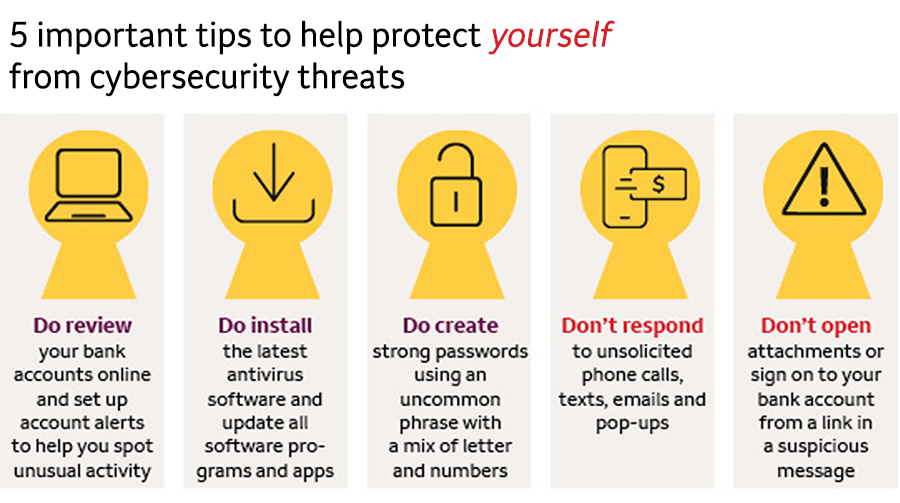Cyber Insurance Explained: Protecting Your Business from Online Threats – Cyber Insurance Explained Protecting Your Business from Online Threats delves into the critical realm of safeguarding your enterprise against the ever-evolving landscape of digital threats. In an age where online vulnerabilities can lead to significant financial and reputational damage, understanding the nuances of cyber insurance becomes essential. This article will guide you through the importance of cyber insurance, the types available, and how it can serve as a vital shield for your business.
From data breaches to ransomware attacks, the stakes have never been higher for businesses of all sizes. By investing in cyber insurance, companies can not only mitigate risks but also ensure they have the necessary resources to recover swiftly from an incident. Join us as we explore how cyber insurance can enhance your business’s resilience in a digital-first world.
In today’s fast-paced world, balancing our personal and professional lives can feel overwhelming. Many individuals strive to achieve a sense of harmony between their work commitments and personal responsibilities. The challenge lies in managing time effectively, prioritizing tasks, and ensuring self-care amidst the hustle. This article offers insights into practical strategies for achieving work-life balance, ultimately leading to a more fulfilling lifestyle.Firstly, understanding the concept of work-life balance is crucial.
It refers to the equilibrium between personal life and career work. When achieved, it allows individuals to allocate time and energy efficiently, ensuring that neither aspect of life is neglected. However, this balance is not static; it varies as personal and professional demands change. Therefore, flexibility is key to maintaining this balance.One essential strategy to fostering work-life balance is effective time management.

Individuals can adopt tools and techniques to help them plan their days efficiently. For instance, utilizing planners or digital calendars can assist in organizing tasks and appointments. By setting clear priorities, individuals can focus on what truly matters, reducing feelings of overwhelm. The Eisenhower Matrix, which categorizes tasks by urgency and importance, is a great method to help identify priorities.In addition, establishing clear boundaries between work and personal life is vital.
Many people struggle with the temptation to check emails or complete work tasks outside of office hours, especially with the rise of remote work. Setting specific work hours and sticking to them can create a healthier boundary. Communicating these boundaries to colleagues and supervisors can also foster mutual respect for personal time.Moreover, practicing self-care is a crucial aspect of maintaining work-life balance.
Taking time to recharge and indulge in activities that bring joy can significantly enhance overall well-being. Whether it’s engaging in a favorite hobby, exercising, or spending time with loved ones, prioritizing self-care can improve productivity and job satisfaction. Remembering to take breaks throughout the workday can also help maintain focus and prevent burnout.Another effective method for achieving balance is delegating tasks.
Many individuals often feel the need to control every single aspect of their workload, leading to unnecessary stress. Learning to delegate tasks, whether at work or home, can relieve some of this pressure. Trusting others with responsibilities not only lightens the load but can also empower colleagues and family members.Furthermore, adopting a positive mindset can contribute significantly to achieving work-life balance.
Often, our perception of stress and workload can influence our feelings and behavior. By cultivating a positive attitude and practicing gratitude, individuals can shift their focus from what is lacking to what is plentiful in their lives. This shift can create a more balanced and fulfilling perspective.Flexibility in the workplace is another key component of work-life balance. Organizations that offer flexible working conditions often see increased employee satisfaction and productivity.
Whether it’s allowing remote work options, flexible hours, or compressed workweeks, employers who recognize the importance of work-life balance foster a healthier work environment. Employees who feel supported in their personal lives are more likely to be engaged and committed to their work.Networking and building a support system can also play a significant role in achieving work-life balance. Surrounding oneself with supportive friends, family, and colleagues can provide a sense of community.
Sharing experiences and discussing challenges can lead to valuable insights and solutions. Additionally, seeking mentorship or participating in professional networks can create opportunities for personal and professional growth.It’s essential to recognize that achieving work-life balance is a journey rather than a destination. Life is filled with fluctuations, and what works today may not work tomorrow. Regularly assessing one’s situation and being open to change is crucial.
It’s okay to make adjustments as personal and professional demands evolve.Furthermore, technology can both aid and hinder work-life balance. While digital tools can enhance productivity and communication, they can also lead to distractions and an ‘always-on’ mentality. Setting boundaries around technology use, such as limiting screen time or designating tech-free zones in the home, can help create a healthier balance.
Lastly, organizations can play a significant role in promoting work-life balance among their employees. By implementing policies that support mental health, such as wellness programs or mental health days, companies can contribute to a more balanced workforce. Encouraging open conversations about work-life balance can also help reduce the stigma surrounding mental health in the workplace.In conclusion, achieving work-life balance requires intentional effort, self-awareness, and adaptability.
By implementing effective time management strategies, setting boundaries, practicing self-care, and fostering a positive mindset, individuals can create a harmonious life that encompasses both personal and professional fulfillment. Remember, balance is a journey, not a destination. It’s about finding what works best for you in the ever-evolving landscape of life. Embrace the process, and strive for a healthier, happier you.



